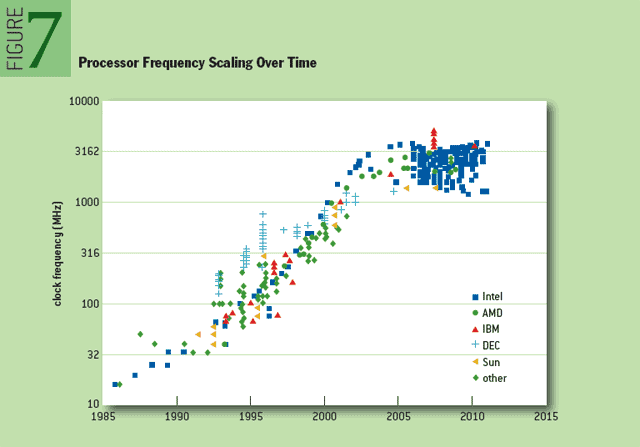juanrga :
goldstone77 :
juanrga :
-Fran- :
juanrga :
adamsleath :
..just thinking its been about 10 years to get from 4.0 Overclocked to 5.0 overclocked.
That has a name: frequency wall

Not quite. It's a self-imposed wall. You can get higher speeds if you're willing to consume more power to achieve it.
I can totally see IBM going for 6Ghz if they so want to if the silicon allows within a reasonable power envelope.
Wrong. The frequency wall is a well-know limit of the laws of physics. Wait sitting for those 6GHz IBM chips. LOL
This is self fulfilling prophecy for everything known, and unknown is physics! As with anything, it's only a matter of time before what was once thought impossible is made reality.
The laws of physics don't stop working when someone desires to ignore them.
Au contraire ! Actually I believe they can.. An here's two examples:
Quantum Entanglement springs to mind. I couldn't find this one it goes something like this:
If you split a photon of light with a prism an shoot one half of the photon through a shudder.. .When you observe the experiment what you think should happen does an one shadow is cast but if you ignore and record it they both cast the same shadow.
Also Here's another experiment I did find that proves you can alter reality or physics just by observing it.. The double slit experiment.
To quote Morgan Freeman in the video "This suggests that we can change the way reality behaves just by looking at it"
https://www.youtube.com/watch?v=ayvbKafw2g0
It appears that what we think has an effect on our reality.. That's "spooky" Interaction for sure.
So that's why something is always in the last place ya look... It ran out of probable places to hide in. Ah that makes perfect sense now !
Stay positive people lol








